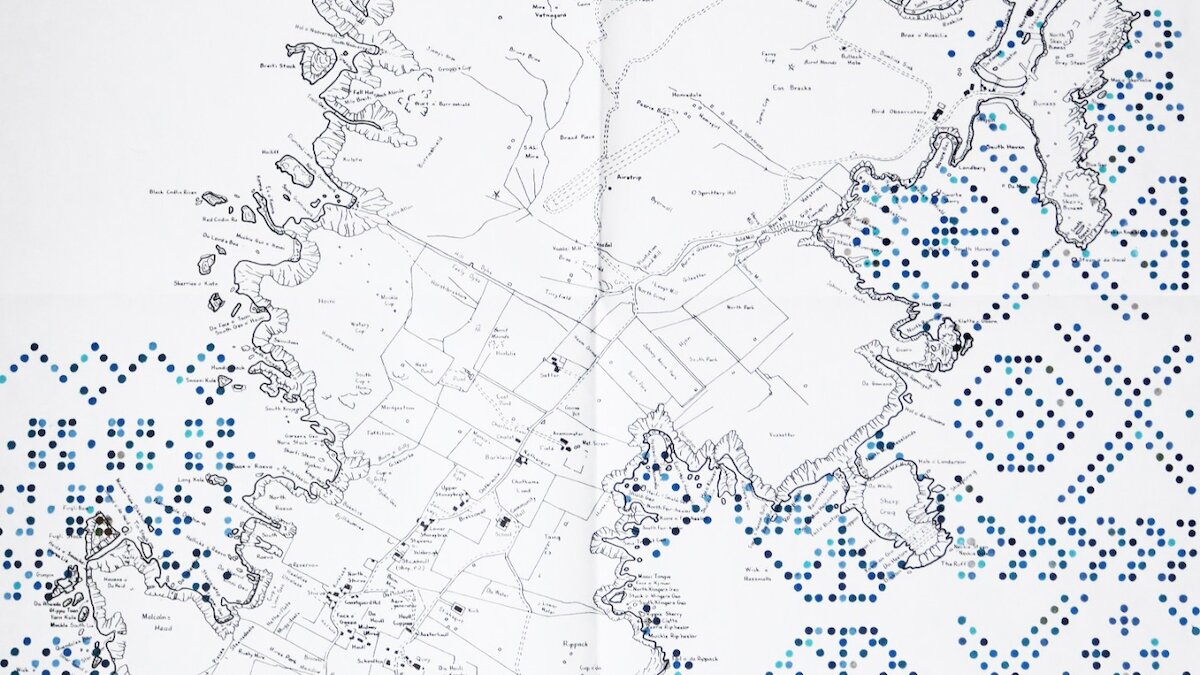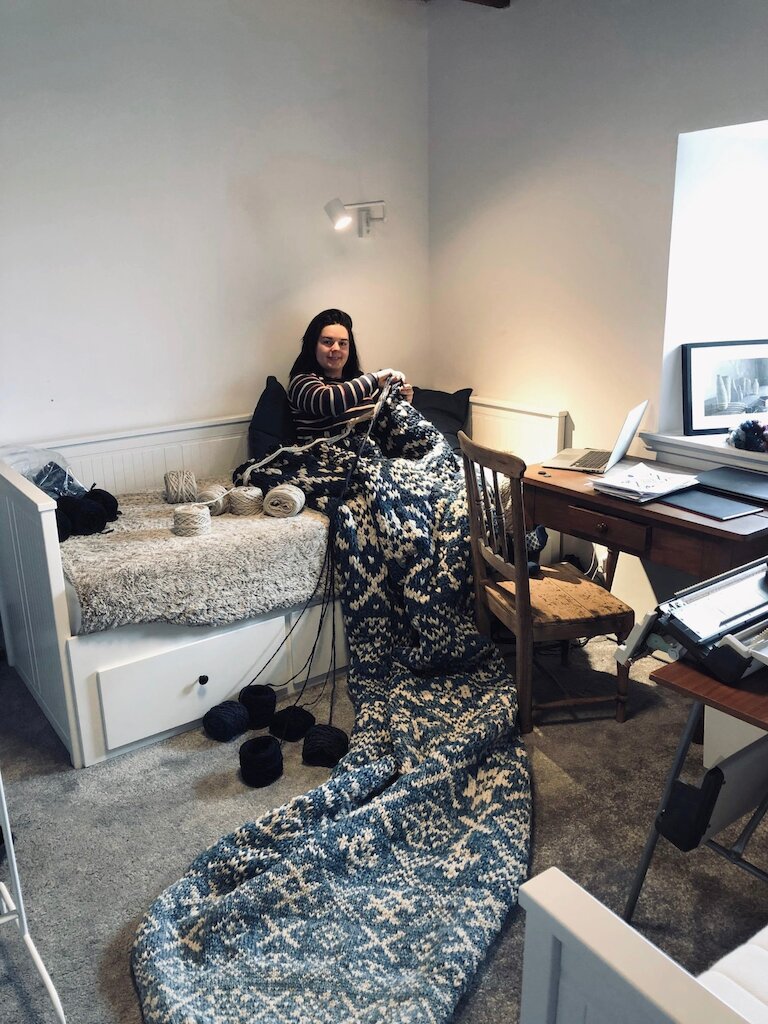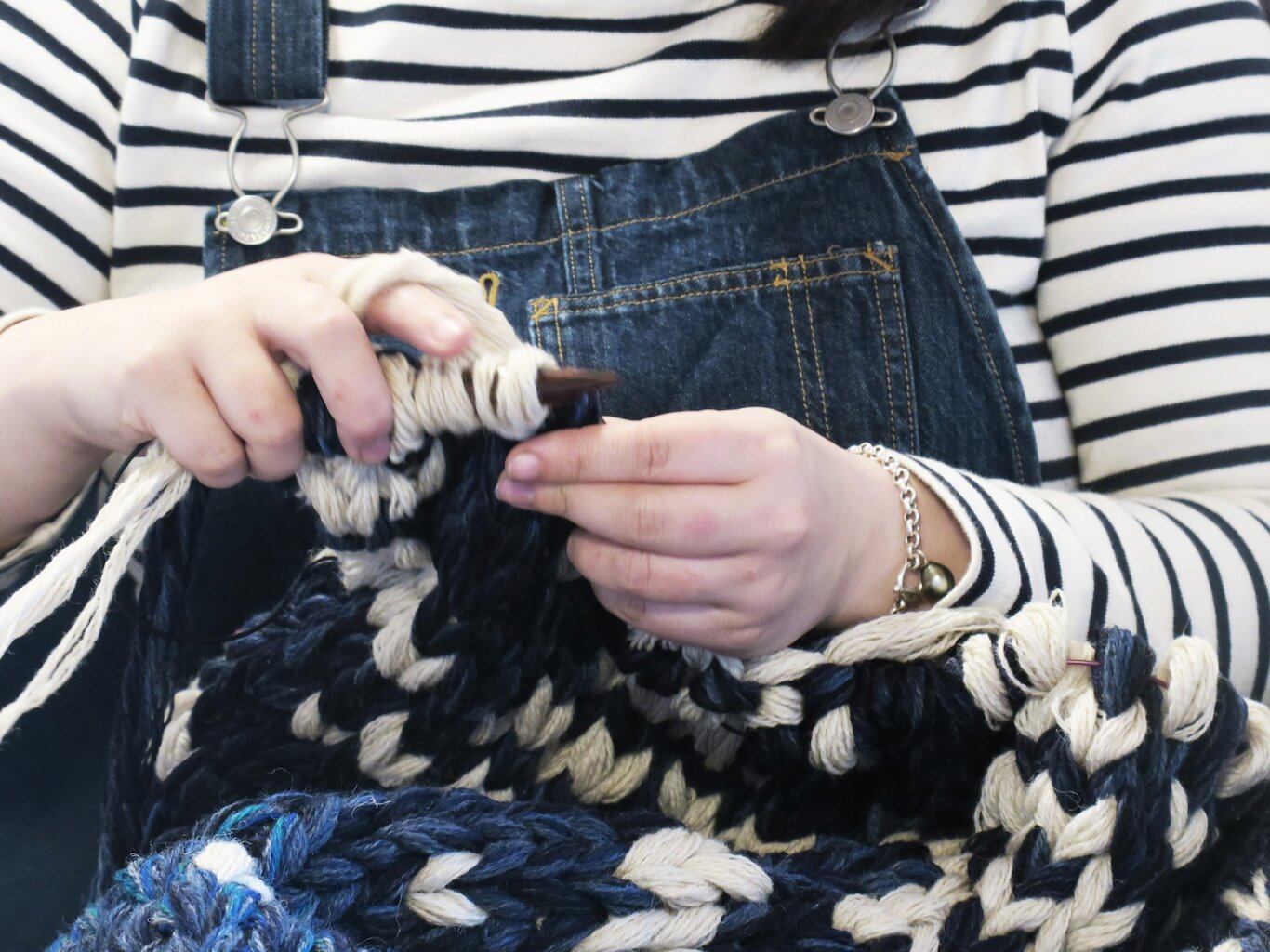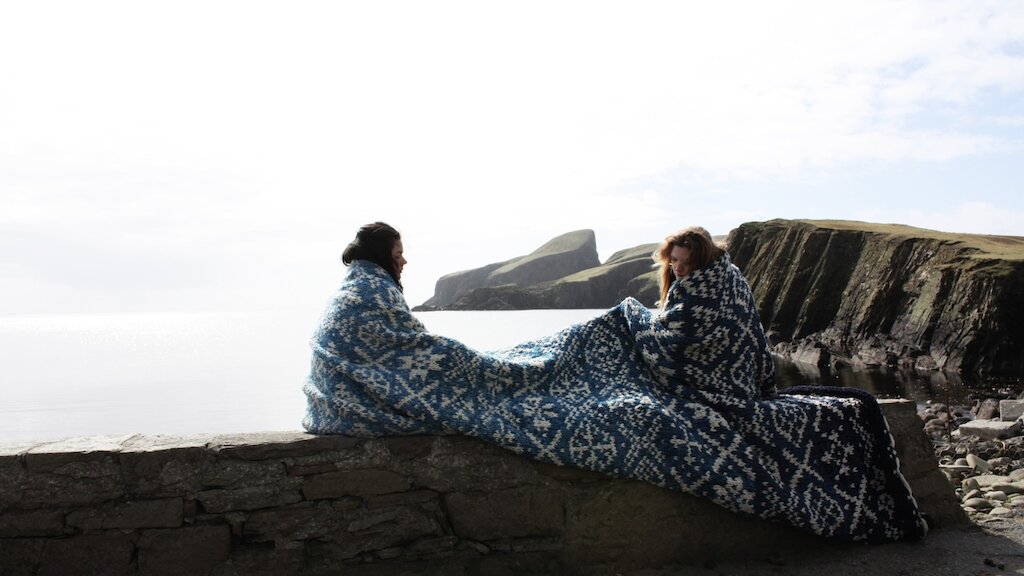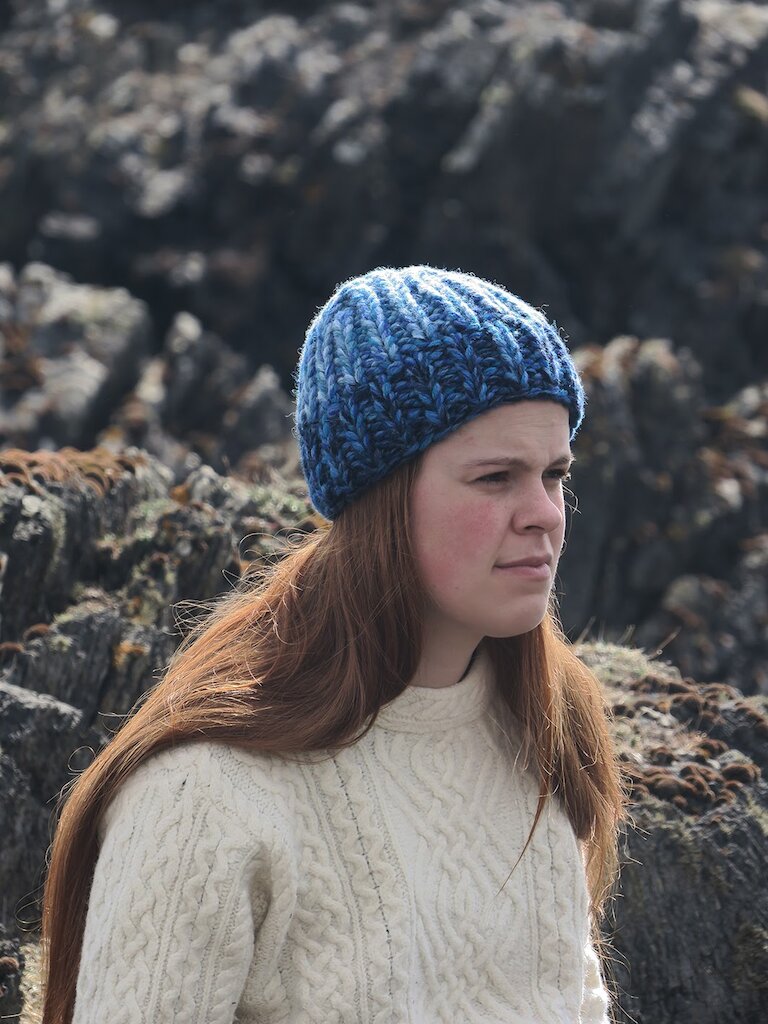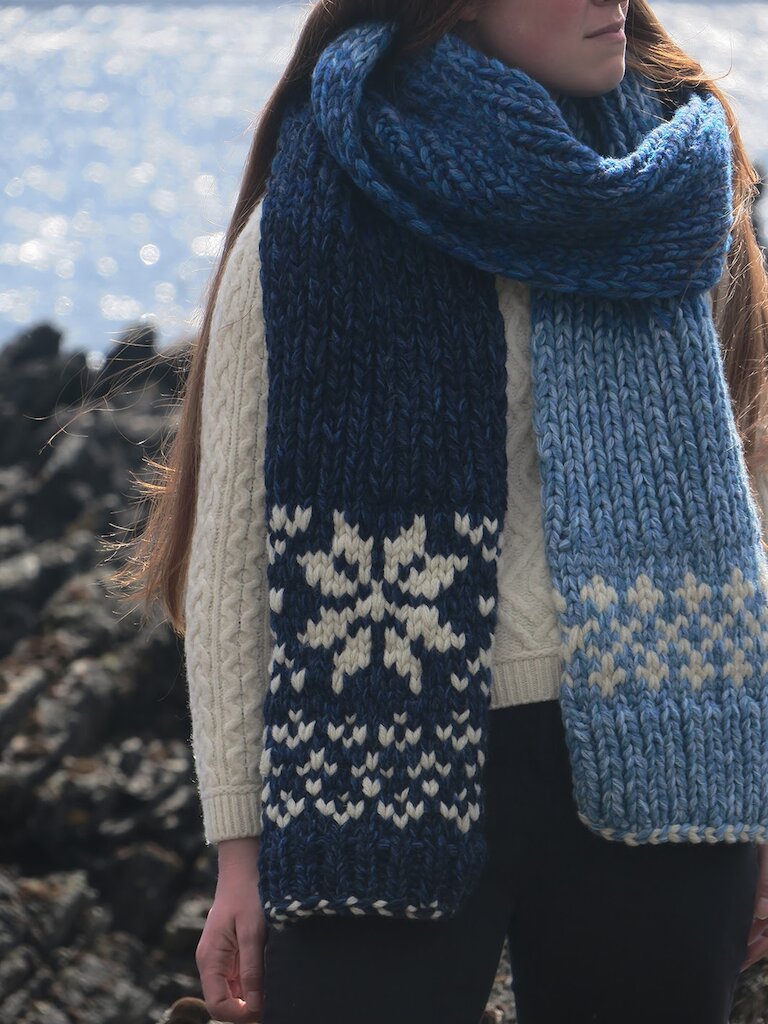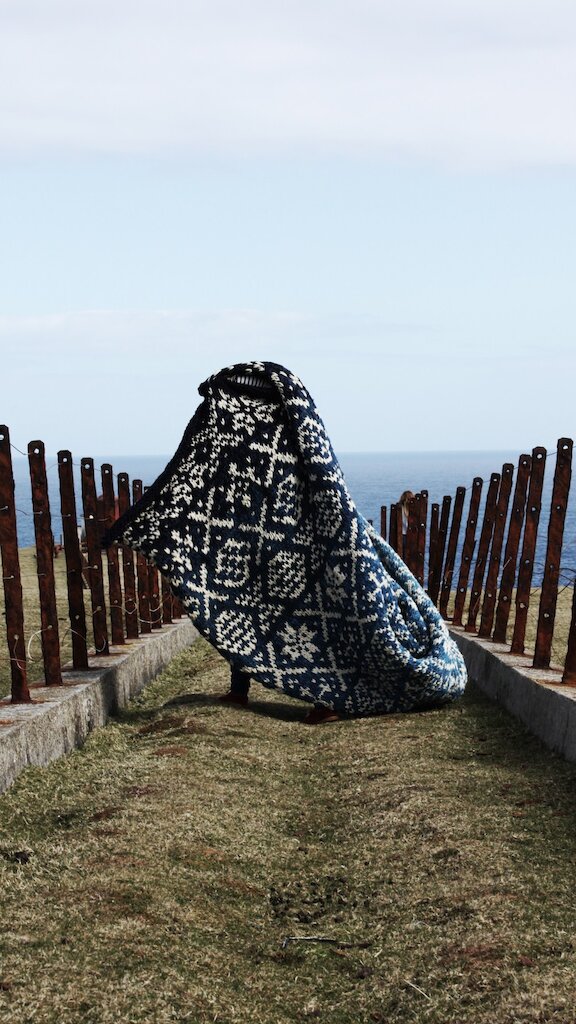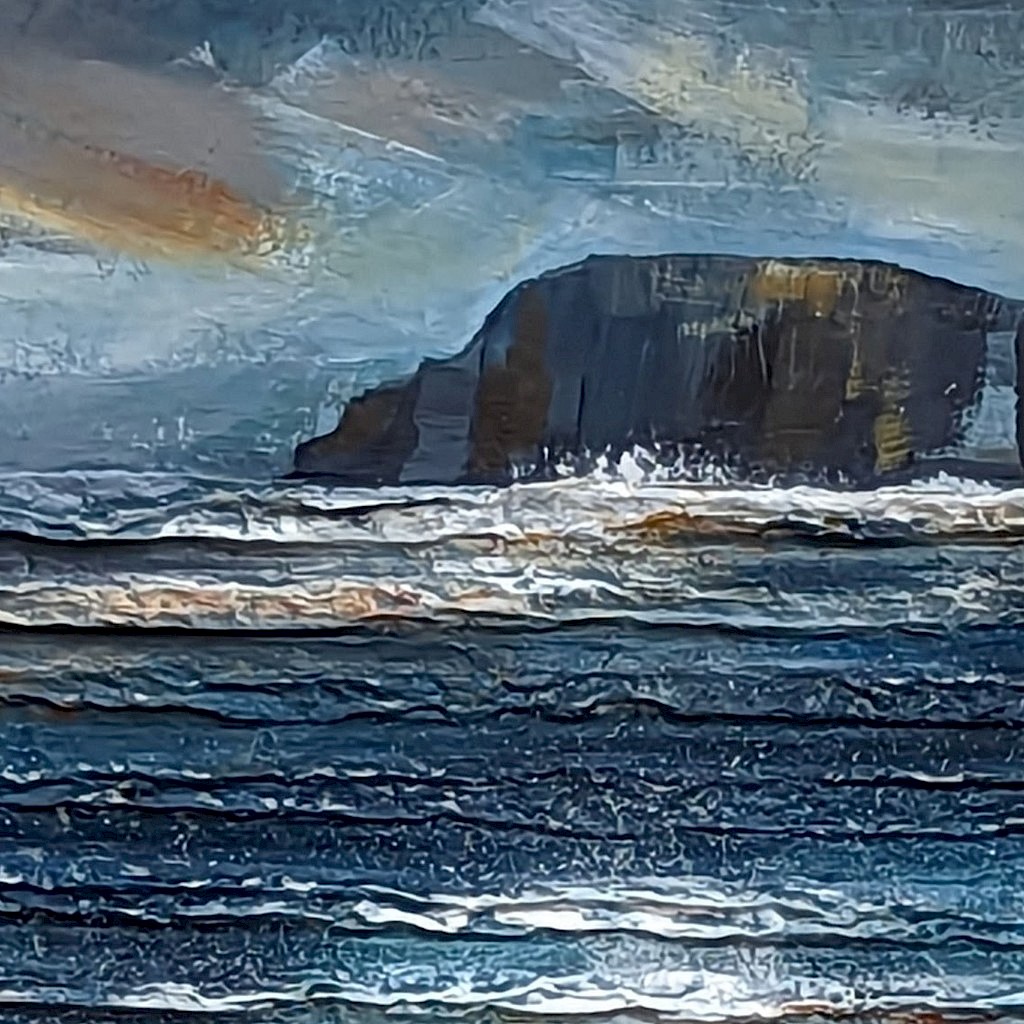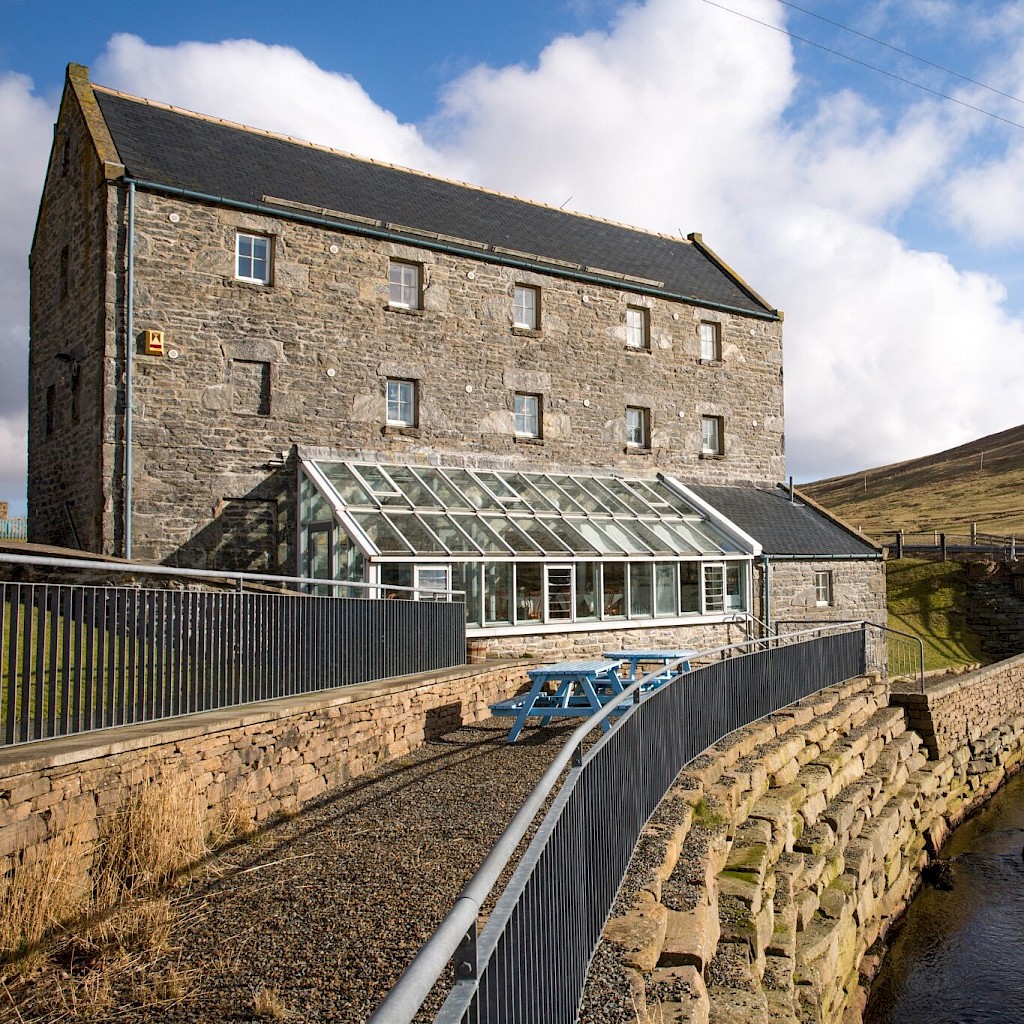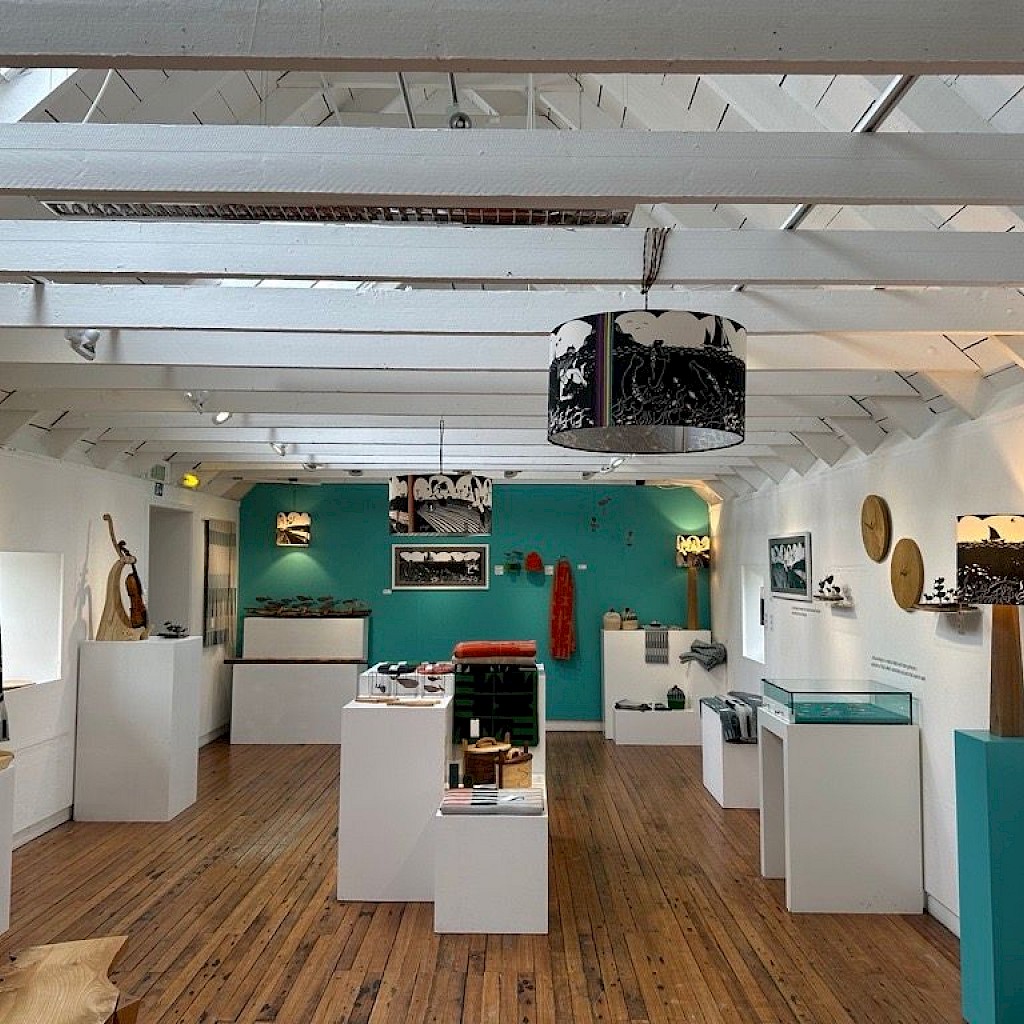Can you tell us a bit about your VACMA funded project? Including what has inspired you, how it develops your practice and what you are exploring.
I’m a French textile designer who moved to Fair Isle three years ago. I have been designing and producing knitwear here for over two years. Fair Isle is a very creative place – don’t take my word for it - come and visit! I think it’s creative because islanders have to be ingenious and inventive. There is no DIY shop, there is no art shop, you can’t go and buy what you need, so instead you re-use or create from scratch. You don’t have the temptation to go the easy way, you have to make do with what is available to you. You find it in many fields: art, music, crofting, cooking, etc. As a visitor, the first time I came to Fair Isle, it was really a revelation to me that having no access to some things can actually be a blessing.
For a long time Fair Isle has been inspiring me to design more ambitious textile art pieces, but I haven’t had the means to develop these. I had an idea for a project that wouldn’t be a garment or other conventional knitwear product, but rather an artwork. It was amazing to get the VACMA funding and be able to bring one of my ideas to reality.
The artwork I created explores the connection between Fair Isle (the island) and Fair Isle (the knitting technique). It was to be something as generous as the island, as powerful as the weather, something heavy and impressive. It was also going to be a real technical challenge to myself and my knitting skills.
I wanted to use a limited pallet but with a multitude of shades. I love Jamiesons of Shetland wool for several reasons, it is produced and spun in Shetland and it comes in a truly impressive range of colours. It’s a dream for a knitwear designer passionate about shades - the dyes reflect very well the shades of the Shetland landscape. Their range of Blues are particularly beautiful - between sea and sky you get a multitude of tones – and their shades of blues were the obvious choice for the project.
As a textile artist I like to challenge what I’m knitting with and what the thread can be. In the piece 27 shades of Shetland blues I planned to start knitting with one strand of yarn and end up with 27 - a real technical challenge. The idea was to knit exponentially – both in the increase of the depth of colour and in the size of yarn and needles.
The outcome is perhaps more about performance than textiles. Firstly, the process was incredible – for weeks I was just making, just doing, just knitting, for the sake of the action just to see the yarn going through my hands and the patterns revealing themselves. From a simple and easy knit it became more and more difficult to manage - even though I designed it, I was continually surprised and impressed by how it grew. It ended up extremely heavy (around 12kg) and turned into a physical challenge. In fact, I have to admit, it grew a bit out of control!
Secondly, the size of the piece presents challenges in its final form. It is not a garment, but the materiality of it still links with the body and it is natural to try to wear it, yet the sheer weight of it immediately engulfs you and makes it extremely difficult to move and carry. It was never intended to simply exist as a 2 dimensional wall hanging and so instead I have been compelled to allow it to re-inhabit and explore its relationship with the landscape that inspired it and hope to see it venture into other landscapes in the future.
I am really pleased with how this project has helped my practice develop. After finishing the knitting of 27 shades of Shetland blues it felt strange - it had taken pretty much all my time for a whole month, and suddenly it was done. I don’t usually knit by hand and have never actually knitted any Fair Isle by hand before! Yet I became so attached to the method and design potential that I immediately started making smaller pieces that could be sold to raise funds to purchase wool for more projects like this one. This processes of creation, making something new, something with a different way of using the wool and the pattern and then bringing it back to a collection of knitting for sale is a processes I would like to explore again.
I have always understood the benefit of this sort of project in garment design – breaking away from creating commercial items allows you to explore new ideas and techniques – however, I am really pleased at how directly this particular project has led me to develop new products. So far, I have designed a scarf and a hat in the big knit, not the biggest but using 12 strands of wool, so 12 times bigger than usual knitting!
The hat and scarf will be available to order through our guesthouse website https://www.taft-guesthouse.com/knitwear. I would also be interested in taking on bespoke commissions if someone would like a blanket or anything else made in this style.
Do you listen to any music when you're creating, or in quiet periods? If so, what's in your playlist? If not music, what helps to inspire your work?
Hand knitting 27 Shades of Shetland blues took me quite a lot of time, at first it was quite transportable so I got to take it with me and be able to knit from different spaces, in the house and outdoors.
I’m really lucky that I can find so much pleasure while knitting. I never only knit. Sometimes I knit and think, sometimes I knit and listen to music, sometimes I knit and watch a film, sometimes I knit and I listen to a book. It’s really fantastic to be able to produce something while also having a leisure time. That is certainly why I can knit for days without becoming bored or crazy.
Sometimes I would be listening to music, the musician that inspires me the most is Yann Tiersen, he lives in a tiny island in Britany, his music was already inspiring me before I knew where he lived but now even more.
Sometimes I was watching programmes on Netflix, I did watch quite a lot of things, only one stayed with me. Unorthodox. I could speak about it for a while and it probably would take a while for me to explain why I felt it was in connection with what I was knitting. Let's just say it was going perfectly with my state of mind at the time and I would highly recommend it.
Sometimes I would listen to audio books, and it was the same it was just taking my minds to thoughts that I thought in connection with what I was making.
I also spent quite a lot of time thinking about all the generations of women that have been knitting on Fair Isle in the difficult conditions, it was just a few decades ago. It makes me feel really lucky. I’m always so impressed when I think how creative they were considering that many never left the island and the hard life crofting was in such a remote and weather dependent place. It’s such a privilege been able to be part of this tradition and keeping it a live, keeping it relevant and actual.
Finally (a heavy question), what role do you think the arts and creativity can play in society, especially at time like this?
For me, the power of art is to make you feel. No matter what those feelings are - positive or negative - art will make you feel and think and talk and share. We are, at the moment, socially distancing and isolating, but watching art or making art is a way to be active and productive. It’s a way to escape the greyness of life and travel into artists’ worlds. For artists, art is a way of expression and communication, it is important in society that individuals have a voice and share their views. Artworks are also often things that will last in time and, in a few years (hundred years), will be the way future generations learn or connect with what happened now.
Creativity is the essence of Art, but creativity is in everyday life as well. Creativity is part of islanders’ lives, whether they are conscious of it or not. It is a much needed skill when you need to survive in an hostile and remote environment.
It allows you to keep an open mind and solve issues efficiently. Creativity also allows people to question the way they are doing things and how can things be done differently. We are going ahead into difficult times, on many level: economically, politically, socially etc… being creative will mean we can find resources to face these new challenges .
I would like to thank everyone that helped in one way or another to take this idea out of my imagination and into the reality. Particularly Eve Eunson for her constant support and Maëlys Gauthier for taking stunning pictures.
We'll be bringing you more content from VACMA awarded artists soon, so stay tuned!
